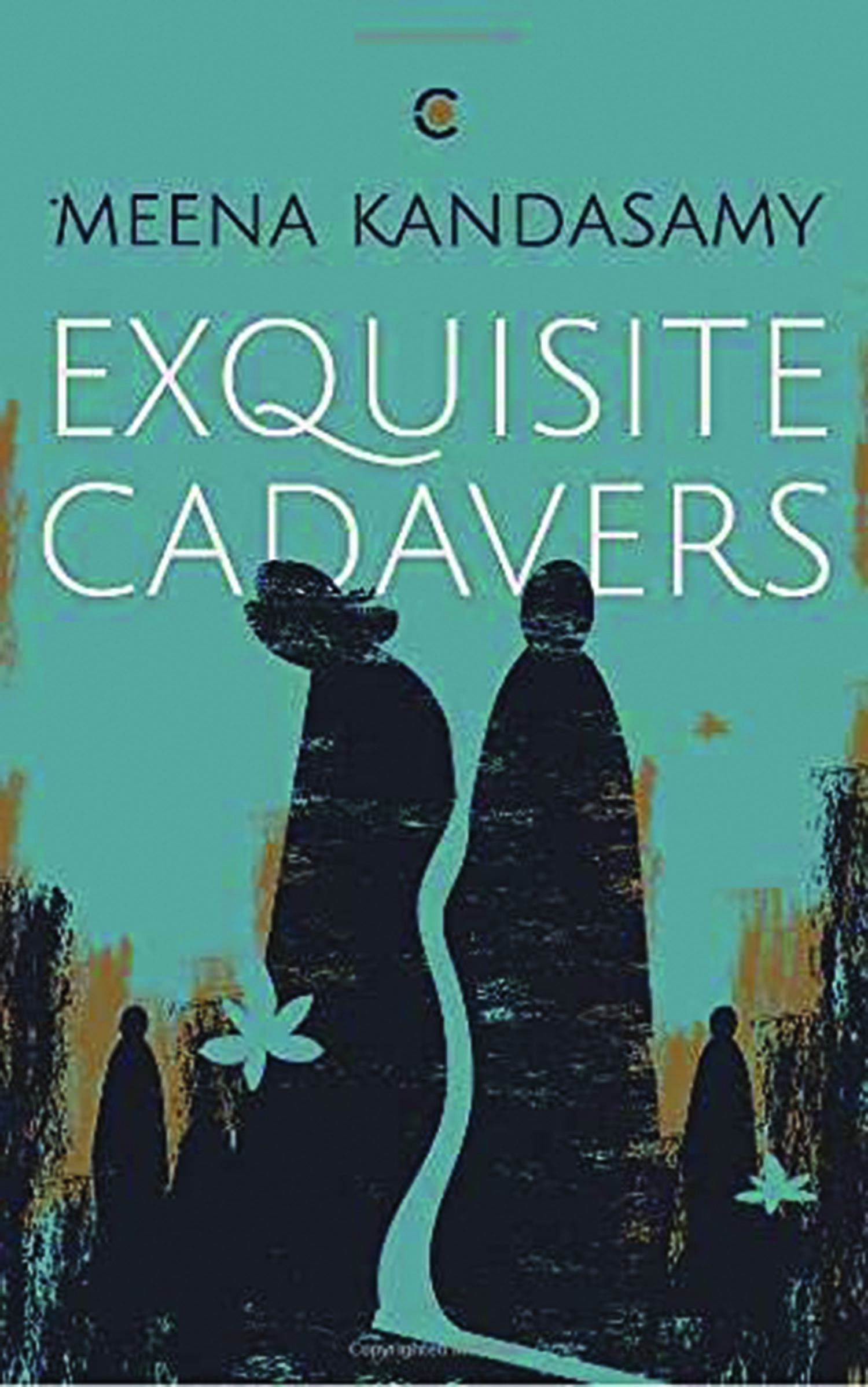Now you see us
Now you don’t.
The quote above was a part of Barbara Kruger’s untitled work (a Photostat print) created in 1987 that depicts a woman’s fingers holding a light bulb and these words are inscribed on the artwork. The first line is in bold and clearly visible while the second line remains less conspicuous. With Exquisite Cadavers, Meena Kandasamy creates two sets of narratives that run parallel with each other. The voices are distinct. In the borders of the book runs the voice of the writer, introducing snippets of her life as well as herself while the main page is left for her characters to negotiate their identities in the spaces that they have created or have been given to them. Throughout the book, the voice of the narrator converges and diverges as if twilling and that maintains a very interesting relationship between the two accounts. I won’t call them stories, as the descriptions and the recalling of events tend to give them an autobiographical element. As one begins reading through these two narratives, two modes of reading crop up, one where there is an active participation required from a reader and at the same time, a detached observation is expected of the reader. It takes a little bit of an effort to come to terms with these demands on a reader but as one becomes comfortable with these binaries, is when the book opens up for a reader.

